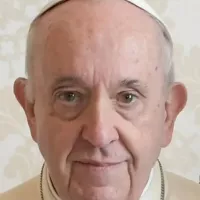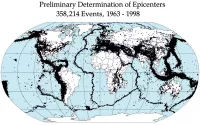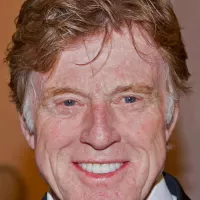Hagia Sophia, located in Istanbul, Turkey, is a site of immense cultural and historical significance. Originally completed in 537 AD as a Byzantine cathedral, it was renowned for its innovative architecture, including its vast interior and pioneering use of a pendentive dome. Serving as a center of Eastern Orthodox worship until 1453, it was then converted into a mosque following the Ottoman conquest of Constantinople. Minarets were added, reflecting its new purpose. Designated a museum in 1935, it was re-designated as a mosque in 2020, and in 2024, the upper floor began serving as a museum. This transition reflects its complex and layered history as both a Christian and Muslim sacred space.
January 1919: Unauthorized Divine Liturgy performed
On January 1919, the Greek Orthodox Christian military priest Eleftherios Noufrakis performed an unauthorized Divine Liturgy in the Hagia Sophia, the only such instance since the 1453 fall of Constantinople.
May 1919: Anti-occupation demonstrations held
From March to May 1919, the anti-occupation Sultanahmet demonstrations were held next to Hagia Sophia.
1923: Hagia Sophia featured on banknotes
In 1923, Hagia Sophia was featured on the 500 drachma banknotes issued in Greece.
1930: Removal of whitewash and plaster in Hagia Sophia
In 1930, during the Turkish Republic, the whitewash and plaster covering the mosaics above the narthex and imperial gates in Hagia Sophia were removed.
1931: Hagia Sophia Closed to the Public
In 1931, the Hagia Sophia complex was closed to the public for four years.
1934: Decision to establish Hagia Sophia as a museum
In 1934, the decision was made to establish Hagia Sophia as a museum.
1935: Hagia Sophia Re-opened as a Museum
In 1935, Hagia Sophia was re-opened as a museum under the secular Republic of Turkey.
1935: Transformation into a museum
In 1935, Mustafa Kemal Atatürk transformed Hagia Sophia into a museum.
1935: Mosaic of the Virgin and Child Revealed
In 1935, the mosaic of the Virgin and Child was revealed by the restoration of Thomas Whittemore.
1935: Council of Ministers decision to transform Hagia Sophia into a museum
The decision of the Council of Ministers from 1935 to transform the Hagia Sophia into a museum.
1939: Mosaic of the Virgin and Child Revealed
In 1939, the mosaic of the Virgin and Child was revealed by the restoration of Thomas Whittemore.
1941: Alfons Maria Schneider publishes final report
In 1941, German archaeologist Alfons Maria Schneider published his final report on archaeological excavations conducted during the mid-1930s at the Hagia Sophia site.
1946: Discovery of a hypogeum
Before 1946, a hypogeum, possibly with a martyrium above it, was discovered at the Hagia Sophia site.
1958: Discovery of the Emperor Alexander Mosaic
In 1958, the Emperor Alexander mosaic was discovered largely through the researches of Robert Van Nice.
1964: Study of Mosaic
In 1964, the mosaic of the Virgin and Child was studied again with the aid of scaffolding.
1979: Archaeological clearing of the Skeuophylakion
In 1979, the Skeuophylakion was archaeologically cleared to its foundations, and the brickwork was repointed.
1991: Pavilion Allocated as a Prayer Room
In 1991, the Turkish government allowed the allocation of a pavilion in the Hagia Sophia museum complex for use as a prayer room.
1996: Hagia Sophia included in the World Monuments Fund Watch List
Due to neglect, in 1996, the World Monuments Fund (WMF) included the Hagia Sophia in their Watch Lists.
1997: WMF secured grants for dome restoration
From 1997, the WMF secured a series of grants for the restoration of the dome of Hagia Sophia.
1998: Hagia Sophia included in the World Monuments Fund Watch List again
Due to continued neglect, in 1998, the World Monuments Fund (WMF) included the Hagia Sophia in their Watch Lists again.
2002: WMF secured grants for dome restoration
Until 2002, the WMF secured a series of grants for the restoration of the dome of Hagia Sophia.
2004: Remnants of a brick wall identified
In 2004, remnants of a brick wall with traces of marble revetment were identified at Hagia Sophia.
2006: Completion of WMF Project
By 2006, the WMF restoration project was complete, but many areas of Hagia Sophia continued to require significant stability improvement, restoration, and conservation.
2009: Faces of Angels Revealed
During renovations in 2009, the metallic lids in the shape of stars that covered the faces of the six-winged angels were removed, revealing the faces.
2009: Restoration of Seraph
In 2009, one of the faces of the giant six-winged seraph on each of the four pendentives was restored to its original state after the Ottomans covered their faces with golden stars.
November 2013: Demands to Convert Hagia Sophia Back into a Mosque
In November 2013, Turkey's deputy prime minister Bülent Arınç demanded the Hagia Sophia be converted back into a mosque.
2013: Minarets Used for Call to Prayer
Since 2013, two of the Hagia Sophia museum's minarets had been used for voicing the call to prayer regularly.
2014: Hagia Sophia: Second most visited museum in Turkey
In 2014, Hagia Sophia was the second most visited museum in Turkey, attracting almost 3.3 million visitors annually.
2014: Restoration of the Skeuophylakion
In 2014, the Skeuophylakion was restored by the Vakıflar.
2015: Concerns that acknowledging the Armenian genocide would accelerate conversion to a mosque
In 2015, after Pope Francis publicly acknowledged the Armenian genocide, the mufti of Ankara, Mefail Hızlı, believed the Pope's remarks would accelerate the conversion of Hagia Sophia into a mosque.
July 2016: Muslim prayers held again in Hagia Sophia
On July 2016, Muslim prayers were held again in Hagia Sophia for the first time in 85 years.
October 2016: Designated imam appointed to Hagia Sophia mosque
In October 2016, Turkey's Directorate of Religious Affairs appointed a designated imam, Önder Soy, to the Hagia Sophia mosque for the first time in 81 years.
May 2017: Morning prayer with call for reconversion
On May 2017, a large group gathered in front of Hagia Sophia and prayed the morning prayer with a call for the re-conversion of the museum into a mosque.
June 2017: Special program with Quran recitation and prayers
On June 2017, the Directorate of Religious Affairs organized a special programme, broadcast live by state-run television TRT, which included the recitation of the Quran and prayers in Hagia Sophia, to mark the Laylat al-Qadr.
March 2018: Erdoğan recited the first verse of the Quran in the Hagia Sophia
On March 2018, Turkish president Recep Tayyip Erdoğan recited the first verse of the Quran in the Hagia Sophia, dedicating the prayer to the "souls of all who left us this work as inheritance, especially Istanbul's conqueror,"
March 2019: Erdoğan announced plan to change Hagia Sophia status
In March 2019, Erdoğan said that he would change the status of Hagia Sophia from a museum to a mosque, calling its conversion to a museum a "very big mistake".
2019: Hagia Sophia as Turkey's Most Visited Tourist Attraction
As of 2019, Hagia Sophia was Turkey's most visited tourist attraction.
July 2020: Hagia Sophia reverted to a mosque
On July 2020, the decision from 1935 to transform Hagia Sophia into a museum was annulled. Erdoğan signed a decree reverting it to a mosque. The call to prayer was broadcast from the minarets. It would be open to anyone, and Christian icons would be protected.
July 2020: Floor hidden beneath a carpet
On July 22, 2020, the floor of Hagia Sophia was hidden beneath a carpet.
2020: Hagia Sophia redesignated as a mosque
In 2020, Hagia Sophia was redesignated as a mosque.
2020: Anniversary of the Conquest of Constantinople celebrated with Islamic prayer
In 2020, Turkey celebrated the 567th anniversary of the Conquest of Constantinople with an Islamic prayer in Hagia Sophia, which caused controversy. Passages from the Quran were also read during the anniversary events in May.
July 2021: UNESCO requests updated report and expresses concern
In July 2021, UNESCO asked for an updated report on the state of conservation and expressed "grave concern" about the future of its World Heritage status.
2021: Status of the Dome
As of 2021, only two sections of the present dome, the north and south sides, are from the 562 reconstructions.
April 2022: Door vandalized
In April 2022, the door of Hagia Sophia was vandalized by unknown assailant(s).
January 2024: Entrance fee for foreign nationals introduced
While the Hagia Sophia remains open for visitors outside of prayer times, starting from January 15, 2024, foreign nationals have to pay an entrance fee.
2024: Upper floor of Hagia Sophia serves as a museum again
In 2024, the upper floor of Hagia Sophia began to serve as a museum once again.
Mentioned in this timeline

Pope Francis served as the head of the Catholic Church...

An earthquake is the shaking of the Earth's surface caused...
Turkey officially the Republic of T rkiye is a transcontinental...

The Pope is the Bishop of Rome and the head...

Istanbul is Turkey's largest city and its economic cultural and...

A star is a self-gravitating luminous plasma spheroid The Sun...
Trending

6 months ago Aljamain Sterling questions Sean O'Malley's stardom, personality deemed 'a little dry'.
Brent Pry is an American football coach who recently served as the head coach at Virginia Tech from until his...

5 months ago Sarah Sherman's SNL Checks Mistakenly Sent to Gilda Radner's Estate: A Sobbing Revelation

30 days ago Della Maddalena Praised Makhachev, Pimblett Favors Him; Bisping Sees Warm-Up Fight

5 months ago Sundance Film Festival's Final Utah Edition: Egyptian Theatre Excluded, Gratitude Celebrated.
3 days ago Mario and Courtney Lopez celebrate 13 years of marriage with loving tributes.
Popular
Matt and Ross Duffer known as the Duffer Brothers are...
Aftyn Alyssa Behn is an American politician currently serving as...

XXXTentacion born Jahseh Dwayne Ricardo Onfroy was a controversial yet...

Candace Owens is an American conservative political commentator and author...

Ilhan Omar is an American politician currently serving as the...

Lane Kiffin is an American football coach currently serving as...
